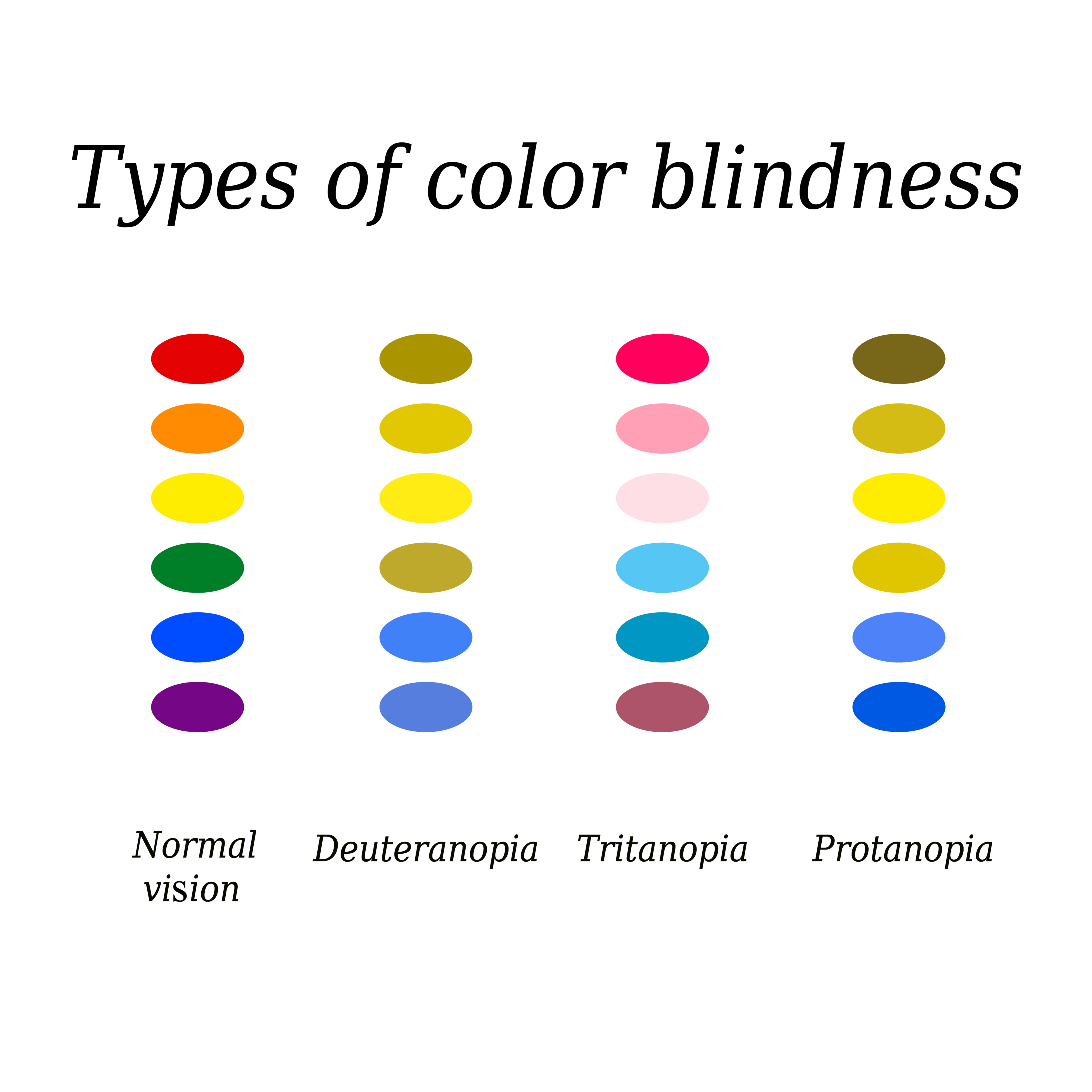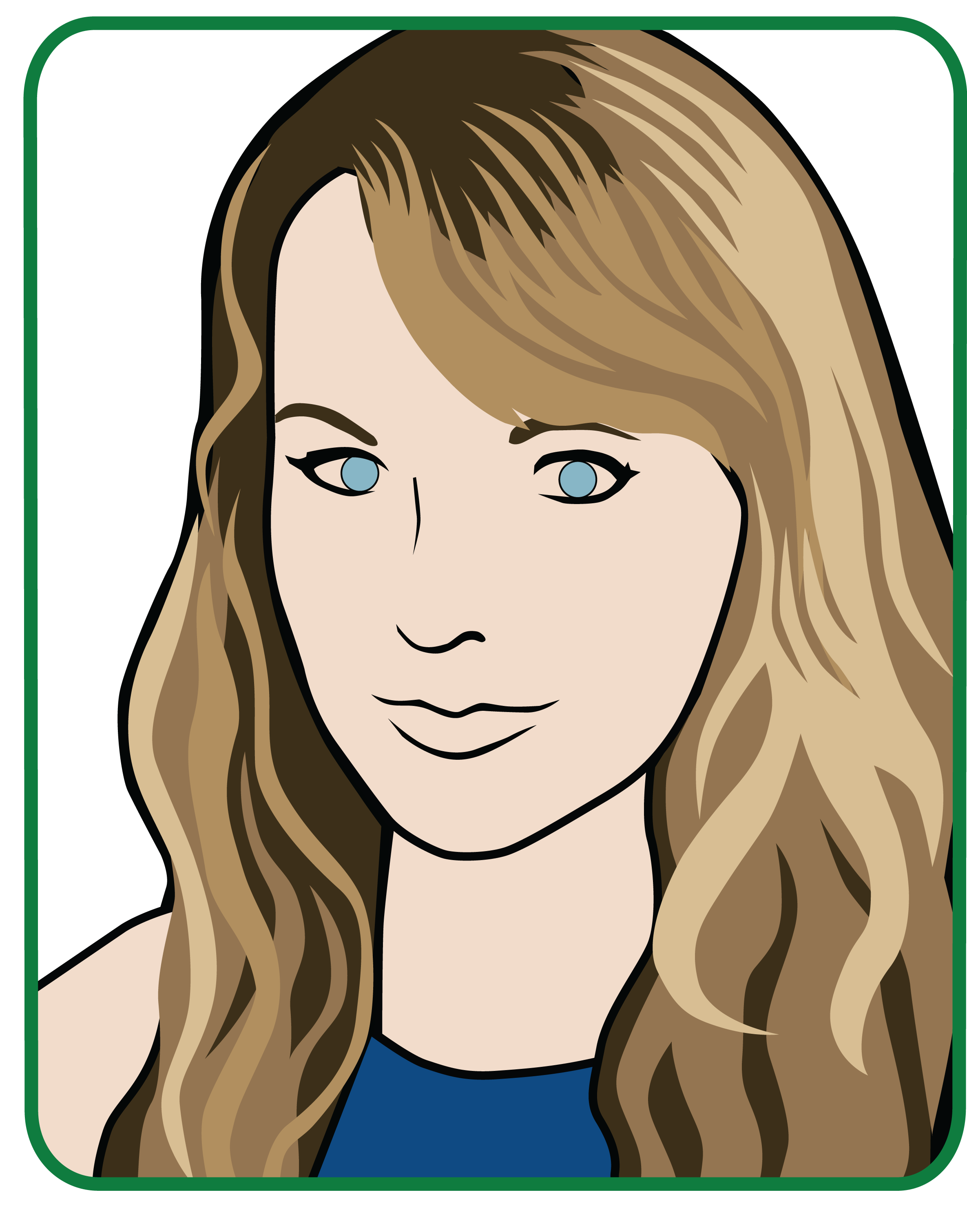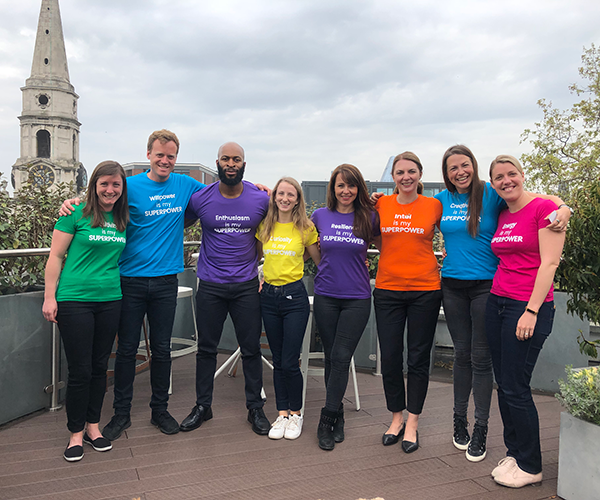Colour blindness
The inability to differentiate between specific colour palettes or 'see' specific colours
Colour blindness (colour vision deficiency, or CVD) affects approximately 1 in 12 men (8%) and 1 in 200 women in the world. In Britain, this means that there are approximately 3 million colour blind people (about 4.5% of the entire population), most of whom are male.
Types of colour blindness

Deuteranopia - Can't see a green tint
Protanopia - Can't see a red tint
Tritanopia - Can't see a blue tint
-
Most colour blind people are able to see things as clearly as other people but they are unable to ‘see’ red, green or blue light
-
There are different types of colour blindness and there are extremely rare cases where people are unable to see any colour at all
-
The majority of people that have colour blindness are male
-
Colour blindness can be genetic but it can also be acquired through specific illnesses
-
The effects of colour blindness can be mild, moderate or severe
-
The most common form of colour blindness is known as red/green colour blindness and most colour blind people suffer from this. Although known as red/green colour blindness this does not mean sufferers mix up red and green, it means they mix up all colours which have some red or green as part of the whole colour. For example, a red/green colour blind person will confuse a blue and a purple because they can’t ‘see’ the red element of the colour purple
Similar problems can arise across the whole colour spectrum affecting all reds, greens, oranges, browns, purples, pinks and greys. Even black can be confused as dark green or dark blue.
Most people are surprised to hear that many people with colour blindness can’t tell red and black apart. Unfortunately, many schools use red to highlight areas of error, and websites tend to use a red button with black text for example to highlight a message. As you can imagine, this is extremely unhelpful for anyone with CVD as they would only see one colour!
Because colour blindness is incurable, it is vitally important that people are aware of the difficulties that people face. Advertising, websites, textbooks, logins all of these things need to be considered to ensure that we are all-inclusive of everyone's needs.

EdPlace has an accessibility toolbar which allows different colour options, to ensure that users can choose a colour palette that is more helpful to them and therefore enhance their learning experience.
Although not a complete solution, some people with colour blindness may find the colour palette option on the toolbar helpful in some scenarios.

2.jpg)









